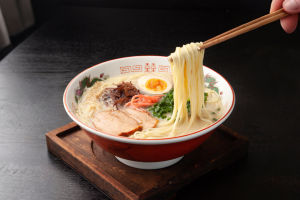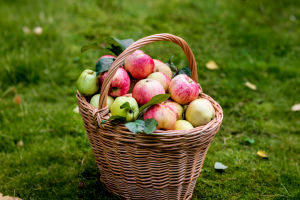Hey Lykkers, if you've ever tasted Gujiya, you know how irresistible it is! Especially during festive seasons like Holi and Diwali, Gujiya is a crowd favorite. The crispy, golden exterior and the sweet, nutty filling make it a treat like no other.
Today, let's talk about how we can make these delightful sweets at home. Trust me, once you try them fresh and homemade, you'll never want to settle for store-bought ones again.
What You'll Need for Gujiya?
To start, we need a few key ingredients. Let's break it down so that we can prepare everything before we dive into the cooking:
For Homemade Khoya/Mawa:
• 1 tsp Ghee
• 1 liter of Milk (or use 100g store-bought Khoya/Mawa)
For Sugar Syrup:
• 1 cup Sugar
• 1 cup Water
• 3 Green Cardamoms (split open)
For Dough:
• 2 ½ cups All-Purpose Flour (Maida)
• 1 pinch Salt
• ½ cup Ghee
• 1 cup Water (approx.)
For Stuffing:
• ½ cup Semolina (Suji), roasted
• ½ cup Desiccated Coconut
• 4 tbsp chopped Almonds, Cashews, or Pistachios
• ½ tsp Green Cardamom Powder (optional)
• ¾ cup Powdered Sugar
Other Ingredients:
• Oil for frying
Step-by-Step Guide to Making Gujiya
Step 1: Preparing the Khoya/Mawa
To make the khoya (or mawa), we start by melting some ghee in a heavy-bottomed pan. Once the ghee melts, add the milk. Bring the mixture to a boil and then reduce the heat to a simmer. Stir every now and then, scraping the sides of the pan to collect the milk solids. Keep stirring until the mixture thickens and no more bubbles are forming. Once done, transfer the khoya to a bowl and let it cool to room temperature. If you're short on time, you can use store-bought khoya, but making it fresh really brings out the flavor!
Step 2: Making the Sugar Syrup
In a separate pan, mix the sugar and water. Heat it on low-medium until the sugar dissolves completely. Add the cardamom and stir well. Set this aside for now; we'll dip the gujiyas in this syrup later.
Step 3: Preparing the Dough
In a large mixing bowl, combine all-purpose flour and salt. Add the melted ghee and mix until the dough starts to feel crumbly. Slowly add water, a little at a time, until we get a soft and smooth dough. Once it's ready, cover it with a damp cloth and let it rest for 15-20 minutes. This will make the dough easier to roll out later.
Step 4: Making the Stuffing
Now, let's prepare the filling for our gujiyas. In a pan, roast the semolina (suji) on medium heat for 2-3 minutes until it's lightly golden. In the same pan, soften the khoya (or mawa) and mix in the roasted semolina. Then, add the desiccated coconut, chopped nuts (almonds, cashews, or pistachios), and cardamom powder if you're using it. Turn off the heat and stir in the powdered sugar. Let the mixture cool down a little before we start stuffing the gujiyas.
Assembling the Gujiya
Now comes the fun part—shaping the gujiyas! Divide the dough into small, equal-sized balls. Roll each ball into a circle of about 2-3 inches in diameter. Place a spoonful of the stuffing in the center of each circle. Gently fold the dough over the stuffing to form a half-moon shape. Seal the edges with a little water, and then crimp the edges with a fork for a decorative touch. Keep all the prepared gujiyas covered with a damp cloth to prevent them from drying out.
Frying the Gujiya
In a deep pan, heat enough oil to fry the gujiyas. Once the oil is hot (you can test by dropping a small piece of dough into the oil—it should sizzle), carefully add the gujiyas in batches. Fry them until they turn golden and crispy. Once they're perfectly fried, immediately dip them in the prepared sugar syrup for about 1-2 minutes. This will make them sweet and shiny!
After soaking, place the gujiyas on a plate and let them cool down. And voilà, your gujiyas are ready to be devoured!
Tips for Perfect Gujiya
• If you want to skip making khoya, you can buy ready-made khoya from the store to save time.
• Make sure to seal the edges of the gujiya well to avoid the stuffing from leaking out during frying.
• You can use either brown or white sugar, depending on your preference.
• If you're not fond of the sugar syrup coating, feel free to skip it!
• For a more convenient shaping process, you can use a gujiya mold or a calzone maker.
• You can also swap all-purpose flour with whole wheat flour for a healthier version.
Making Gujiya is a bit of a labor of love, but it's totally worth it. The crispy, flaky exterior combined with the sweet, nutty filling makes every bite an absolute treat. Whether it's for a special occasion or just a sweet indulgence, gujiya is sure to bring joy to your table. So, what are you waiting for, Lykkers? Gather your ingredients and get ready to make these delicious homemade gujiyas! Let us know how it goes in the comments below, and enjoy!
Happy cooking!


